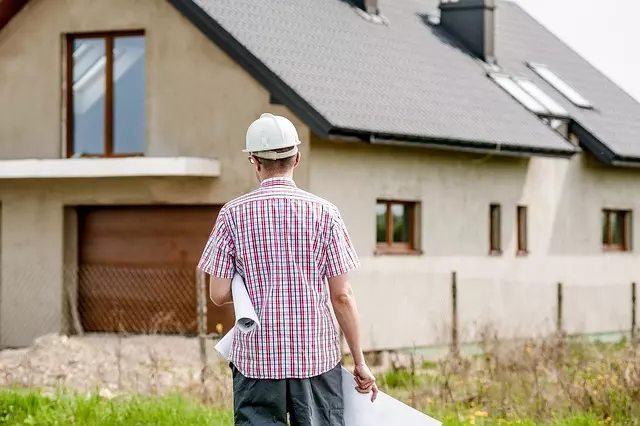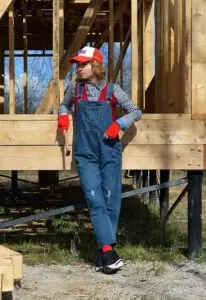Foundation Crack Repair: Experts Guide to Healthy Homes
Foundation cracks, caused by soil movement, differing soil types, and structural issues, require pro…….

Foundation cracks, caused by soil movement, differing soil types, and structural issues, require professional attention from Foundation Repair Contractors. These experts diagnose and address problems like crack repair, settlement, and instability using advanced techniques. Timely inspection is crucial to identify symptoms of severe damage. Modern methods include epoxy injection, carbon fiber wrapping, hydraulic jacks, and piering systems for effective repairs. Hiring licensed contractors offers specialized knowledge, liability protection, and high-quality workmanship. Cost considerations vary based on damage severity and property specifics, with proactive maintenance and regular inspections recommended to save costs.
Foundation cracks can be a serious concern, indicating underlying issues that require expert attention. This article delves into the world of foundation crack repair specialists, exploring common causes and types of foundation damage. We discuss the vital role played by specialized contractors, their expertise, and how they assess and mitigate these problems. From advanced repair techniques to cost considerations and preventative measures, understand why hiring licensed foundation repair contractors is key to ensuring a solid and secure home structure.
Understanding Foundation Cracks: Common Causes and Types

Foundation cracks can range from small, hairline fractures to large, structural gaps, and understanding their causes is essential when considering repair options. These cracks often result from various factors, with soil movement being a primary culprit. Different types of soil expand and contract at varying rates due to changes in temperature and moisture content, which can exert pressure on the foundation, leading to cracks. Another common cause is settlement, where the ground beneath the structure shifts, causing uneven sinking or heaving. This is often seen in areas with unstable soil conditions or improper drainage.
Additionally, structural issues within the foundation itself can contribute to crack development. Over time, concrete can weaken due to exposure to moisture, chemical reactions, and freezing temperatures, leading to cracks that may appear as vertical or horizontal lines. Foundation Repair Contractors employ various techniques to address these cracks, including repairing, sealing, or replacing parts of the foundation to ensure structural integrity and prevent further damage.
The Role of Foundation Repair Contractors: Expertise and Specialization

Foundation Repair Contractors play a pivotal role in addressing and rectifying structural issues that may arise in any building over time. Their expertise lies in diagnosing complex problems related to foundation cracks, settlement, and instability. With specialized knowledge and advanced techniques, these contractors are equipped to handle various types of foundation repairs, from minor crack mending to complete structure stabilization.
Their specialization extends to assessing the cause of foundation problems, which could be due to factors like poor soil conditions, improper construction, or shifting earth. By understanding these underlying issues, Foundation Repair Contractors can implement tailored solutions that not only fix immediate concerns but also prevent future damage. This includes employing methods such as underpinning, piering, or using structural supports to reinforce the foundation and ensure long-term stability.
Assessing the Damage: Identifying Signs Requiring Professional Intervention

Foundation cracks can be a serious issue, and identifying them early is key. While minor cracks might seem innocuous, they could indicate larger structural problems. Look for vertical or horizontal cracks that are wider than a dime, diagonal cracks radiating from a corner, or any signs of uneven floors or walls. These are red flags that require the expertise of professional foundation repair contractors.
Don’t delay if you notice bulging walls, doors or windows that stick, or uneven floors. These symptoms often accompany foundation cracks and could signify serious structural damage. A thorough inspection by a qualified contractor is crucial to accurately assess the severity of the issue and recommend the most effective solution for Foundation Repair.
Techniques and Technologies Used in Foundation Crack Repair

When it comes to repairing foundation cracks, modern techniques and technologies offer effective solutions for both residential and commercial properties. Foundation repair contractors employ a range of advanced methods to address various types of cracks, ensuring structural integrity and longevity. One common approach involves using epoxy injection, where specialized chemicals are injected into the crack to fill and stabilize it from the inside. This technique is particularly useful for narrow cracks and helps prevent further damage by strengthening the existing foundation.
Another state-of-the-art solution is carbon fiber wrapping, which provides exceptional strength while allowing for some degree of flexibility. Carbon fiber sheets are wrapped around the cracked area, acting as a sort of external brace. This method is often used for larger cracks and can effectively prevent future movement and shifting. Additionally, modern equipment like hydraulic jacks and piering systems enable contractors to adjust settlement issues, offering precise and efficient crack repair solutions.
Benefits of Hiring Licensed and Insured Foundation Repair Specialists

Hiring licensed and insured foundation repair specialists offers numerous benefits for homeowners facing structural issues. These professionals possess the expertise and knowledge required to identify the root cause of foundation cracks, ensuring long-lasting repairs. With proper training, they employ advanced techniques and materials that are tailored to specific problem areas, preventing future damage.
Insured contractors provide peace of mind, as their policies safeguard against potential risks and liabilities associated with the repair process. This protection is vital for homeowners, shielding them from financial burdens in case of unforeseen complications. Additionally, licensed specialists adhere to industry standards and regulations, guaranteeing high-quality workmanship and structural integrity, thereby enhancing the overall value of your property.
Cost Considerations: Factors Influencing Foundation Repair Expenses

When considering foundation crack repair, cost is a primary concern for homeowners. The expenses involved can vary greatly depending on several factors. One significant influencer is the extent and severity of the damage. Minor cracks might only require filling and sealing, while extensive structural issues could demand comprehensive repairs, including underpinning or even foundation replacement.
Another factor is the size of the property and the complexity of access. Smaller homes with easy-to-reach foundations may incur lower labor costs compared to larger properties with intricate layouts. Additionally, location plays a role; regional variations in construction methods and material costs can significantly impact pricing. Homeowners should obtain quotes from multiple Foundation Repair Contractors to understand the range of prices and choose a solution that aligns with their budget while ensuring effective repair.
Preventative Measures: Long-Term Solutions for Healthy Foundations

Regular inspection and maintenance are key to preventing foundation cracks. Foundation repair contractors recommend checking for signs of shifting or damage at least once a year, as early detection can save significant costs in the long run. Addressing minor issues promptly prevents them from escalating into costly repairs.
Implementing preventative measures like proper drainage around the house, maintaining adequate humidity levels, and ensuring proper soil compaction during construction can also contribute to healthy foundations. These strategies form an effective defence against common causes of foundation damage, such as excessive water, shifting soil, and settlement.







